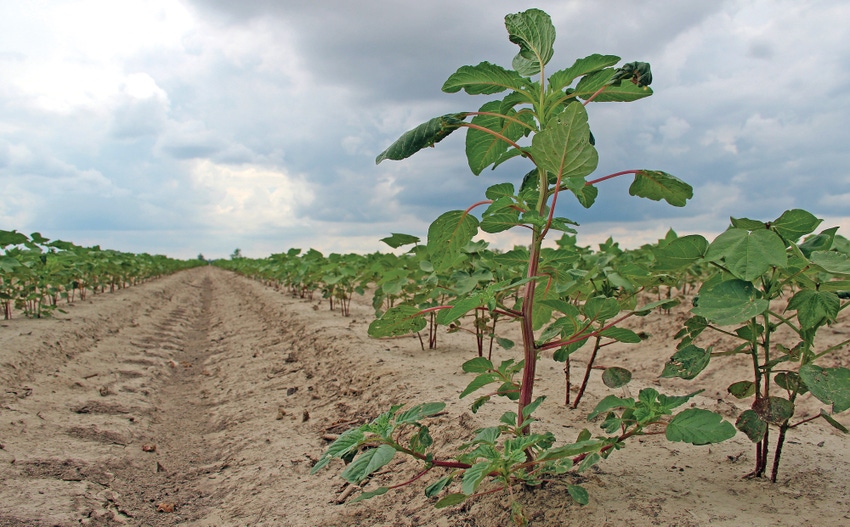July 23, 2012

This is the time of year for phone calls of frustration from consultants and farmers. I have had several from excellent consultants saying, “I did not get my residuals activated timely in rice and have thrown the kitchen sink at the barnyardgrass and have not phased it.” These are scary, because the kitchen sink has included every mode of action we have available.
I sound like a broken record saying that we have no herbicide modes of action on the horizon in rice. If we lose what we have, the weeds cannot be controlled.
I know of several situations this year where Clearfield rice growers would not use any alternative residual herbicides, choosing to depend strictly upon Newpath and Beyond for barnyardgrass management. This is a huge mistake for two reasons.
First, the program may well fail to control the barnyardgrass — in some of these cases it did. Second, it is the worst-case scenario for the development of ALS-resistant barnyardgrass. Once the barnyardgrass escaped in these situations, the consultant could not control it.
Whether or not it is resistant I don’t know. However, I do know that Dr. Jason Norsworthy has documented ALS-resistant barnyardgrass in Arkansas and the number of resistant populations increases each year.
Read: Glyphosate-resistant Palmer amaranth on turnrows and ditchbanks
In soybeans, I get a lot of calls in both Roundup Ready and LibertyLink soybeans along the lines of: “I controlled the small pigweeds but missed some of the larger weeds. Now they are 2 to 3 feet tall. What do I hit them with?” The best answer would be a sharp hoe, but in most cases that will not happen.
Escapes happen for a several reasons. First, the growth rate of Palmer pigweed often overwhelms the ability to apply the herbicide in a timely manner. Another problem is it sure seems 20 percent of the population just grows a lot faster than the remainder of the population. Nearly every field of small soybeans I see will have mostly 2-inch pigweeds, but then a lot of 6-inch pigweeds, and the farmer is adamant he started clean.
How can this be? When most of the population gets to the 3- to 4-inch stage for treatment, the larger ones are a foot tall, and you can not kill them. The other thing that happens with escapes is the numbers game. When we get the population numbers up to the high numbers found in a lot of fields now, it is simply impossible to kill all of the weeds with a single application of Flexstar, Blazer or even Liberty.
Read: Seed industry’s future tied to herbicide resistance
One answer is to time the first postemergence application to the largest weeds and do not worry about the stage of growth of the soybeans. Another thing that helps tremendously is to make an automatic second application seven to 10 days after the first.
I am coming to the point of a treatment being two back-to-back postemergence applications regardless of the herbicide you are using. I still get too many calls from folks afraid a second application will not do any good on weeds with most of the leaves burned off. My answer: to kick them again while they are down! If you let them recover, you are starting all over again on a bigger weed — and if you didn’t kill them the first time you will not kill them the second or third or fourth time either. Then you have pounded them three or four times with a sub-lethal dose and that is a worst-case scenario for resistance development.
We have two postemergence modes of action still working on pigweeds — Liberty and the PPO inhibitors like Flexstar and Blazer. We cannot afford to lose them. A lot of growers have really stepped up their game this year, and it shows in the fields. The next step up has to be eliminating the wounded escapes and continuing to eliminate seed production anywhere you find them growing.
About the Author(s)
You May Also Like




